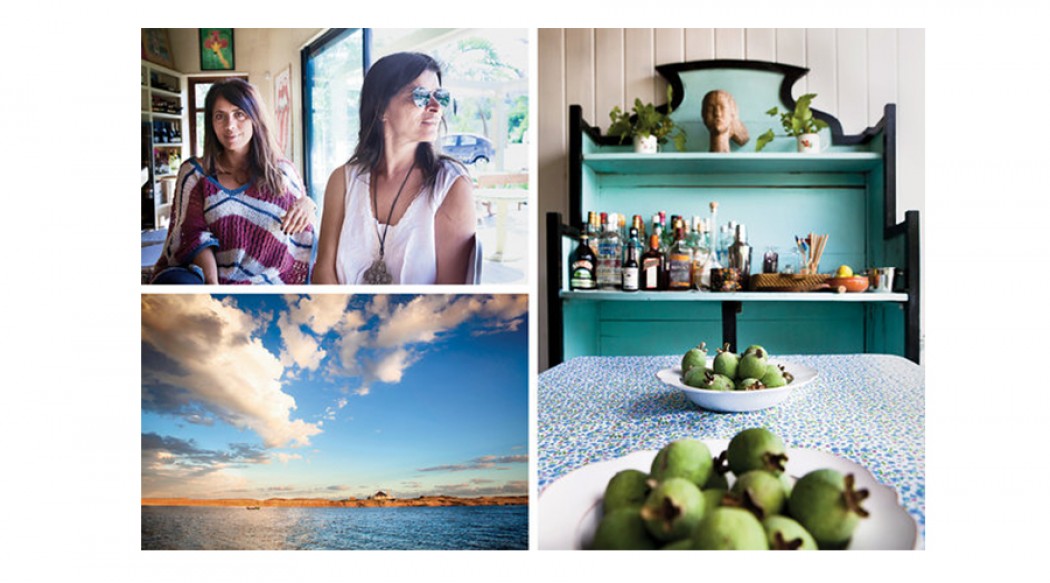A pesar de la multitud del jet-set internacional que pulula José Ignacio cada invierno, este tranquilo pueblo de la costa uruguaya está decidido a preservar sus raíces de pueblo pequeño.
It was just past 5 p.m., that rare quiet window of time between the end of lunch and the start of cocktail hour in José Ignacio, a Uruguayan fishing village, which every winter becomes a playground for the international moneyed set: Argentine polo players, European aristocrats and fashion V.I.P.s like Naomi Campbell and Mario Testino. Paula Martini was making an espresso behind the bar at Santas Negras, the lifestyle store and restaurant she opened in 2012 with her friend Patricia Torres, an interior designer. In about two hours, the terrace would be heaving with pretty young things drinking Champagne in their diamonds and flip-flops.“It gets so crowded during high season that the true luxury is to have a place to go where it is quiet,” said Martini, a brunette in her early 40s with the frenetic energy of an Almodóvar character. To escape the crowds, she heads to her husband Martín Pittaluga’s beach club, La Caracola, a simple shack on the shores of Laguna Garzón. The club is only accessible by boat — to those who even know about it.
José Ignacio is about to get a lot busier. First there is the hotel Bahia Vik, which arrives next month and is the latest outpost from Alex Vik, a Norwegian billionaire who opened his first two properties here about five years ago. The town is also planning its first international art fair, Forma, which will feature curators and artists from all over the world. And then there are stylish new shops like Santas Negras, which wouldn’t look so out of place in the Hamptons.
Still, locals (about 300 residents live here year-round) have been trying to tone down the glitz factor lately. During the high season, which runs from Christmas to the end of January, they adopt a grin-and-bear-it attitude, holding out for spring (their autumn, actually), when José Ignacio returns to its small-town pace. “Personally, March and April is my favorite time to be in José Ignacio,” said Vik, whose mother was born in Uruguay. “It’s still summer but more intimate.” For his latest project, he has developed a property on Mansa Beach that was originally slated to become a Setai hotel. After the economic slowdown a few years back, the hotel chain’s splashy plans were stalled, and Vik eventually took it over. Though his earlier properties feature more dramatic architecture — Playa Vik is filled with works by James Turrell and Zaha Hadid, while Estancia Vik is a sprawling ranch — the Bahia Vik complex, built from natural, organic materials, will be more low-profile, blending quietly into the beach dunes.Not too long ago, it was the relative remoteness and Arcadian vibe of José Ignacio that made it the wilder, less commercial alternative to Punta del Este, a famous jet-set destination 20 miles down the coast. As Punta del Este became overrun with condo towers and socialites in microbikinis, José Ignacio, with its smattering of modest whitewashed cottages and rugged, undeveloped coastline, proved to be the more low-key alternative. If Punta del Este was Miami, José Ignacio was Montauk.
Soon wealthy South Americans were migrating north to build houses. Martin Amis and his wife, who is half-Uruguayan, bought a place that they later sold to Shakira. And foodies, including Alice Waters, were making the pilgrimage to restaurants like La Huella, another spot Pittaluga operates from a humble bungalow on the beach.
But as this tiny, laid-back fishing community was heading toward becoming the next St.-Tropez South, the country’s economy sputtered. The Setai deal eventually fell apart, some of the pioneers of the scene headed inland to the quieter tumbledown town of Pueblo Garzón and certain blasé globetrotters were rumbling that José Ignacio was “over.”
In the last few years, as the economy has improved and the tourists have returned, the locals have tried to keep José Ignacio a little more under the radar. Starting an international art fair here might seem like an odd way to do this, but the founders, the Spanish artist Andrés Ferrandis and Guntram von Habsburg-Lothringen, an Austrian archduke born in Uruguay, see it differently. The Miami-based partners chose José Ignacio because “we want to bring international contemporary art to Uruguay,” said von Habsburg-Lothringen, who lived here with his family until 2008, after a serious motorcycle accident left him paralyzed and he was forced to relocate to the States. The two wanted to do something more communal in the art world. “Is the meaning of art only to sell it? We wanted to bring together good artists and have interesting conversations.” To that end, for their first fair they will organize small dinner parties where curators and collectors can discuss art in private homes.
Torres and Martini are sticking to the same type of grass-roots philosophy with their new concept shop. “We believe in making things from materials that we find here,” said Torres, who has stocked Santas Negras with fashion and furniture made by local artisans using local materials. “But it’s very difficult. In Uruguay there are few resources, basically some wood, some leather and a few guys who can build things.” Still, the two have managed to fill their shop with beautiful things: tables made of rawhide from the area’s cattle and sweaters hand-knit by local women.
“Those of us who have been around a while are nostalgic for a taste of the old José Ignacio,” said Pittaluga, who recently teamed up with his friend Fernando Trocca, one of Argentina’s most famous chefs, to bring José Ignacio’s old Santa Teresita restaurant back to life. Opened in the early ’70s, Santa Teresita was run by Nilia Otilia Testuri, who was renowned for her seaweed omelets. Back then there was no electricity and water was delivered to the few houses in tanks by horseback. “Nilia is still around,” Pittaluga said. “We’re begging her for her recipe.”
Fuente: http://tmagazine.blogs.nytimes.com/


